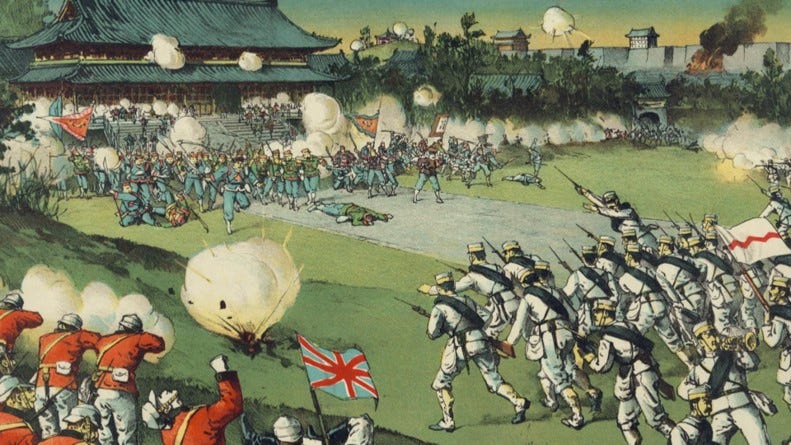Episode I: Welcome to Backstage History. From Rebellion to Reform: the Boxer Indemnity Scholarship Program
Introduction to our first Backstage series
Hi! Did you know China’s top education institution, Tsinghua University, was founded with funds from the Boxer Indemnity Scholarship Program established by U.S. President Theodore Roosevelt?
Welcome to our first series dedicated to the Boxer Indemnity Scholarship Program, one of the first education exchanges between the two superpowers: America and China. Unfortunately, not many people know about it, so this post, the first of the series, offers some historical background on how this event came to be.
In 1899, a group called “the Boxers” attempted to eliminate “foreign influences in China,” known as the Boxer Rebellion. The Eight-Nation Alliance, including Austria-Hungary, France, Germany, Italy, Japan, Russia, Britain, and the United States, sent troops to China to control the violence. The Qing government, which had supported the Boxers, was forced to sign the Boxer Protocol and pay an indemnity worth US$335 million. This led to a nationwide boycott of Western goods.
Image source: https://www.britannica.com/event/Boxer-Rebellion
To ease the tension, President Theodore Roosevelt proposed returning the excess indemnity but faced domestic opposition that was concerned about empowering a corrupt Qing government. The University of Illinois president, Edmund J. James, suggested using the indemnity to “educate the young Chinese.”
“China is upon the verge of a revolution ... The nation which succeeds in educating the young Chinese of the present generation will be the nation which for a given expenditure of effort will reap the largest possible returns in moral, intellectual and commercial influence.”
-- Letter from Edmund James, president of the University of Illinois to President Theodore Roosevelt
Roosevelt adopted the suggestion to initiate an “American-directed reform in China.” The Chinese government saw the program as an opportunity to secure “peace and trade” and “plant talents for the future.”
"This group of students would be able to “insure a peace and trade in the Far East that treaties and military forces cannot insure.”
-- Liang Cheng, China’s ambassador to the U.S. during 1902-1907
This was the beginning of an influential educational exchange that went far beyond and ultimately shaped China’s modernization.
Thank you for reading. Stay tuned for our next blog to learn more about this topic. See you next time!
- Ethan


